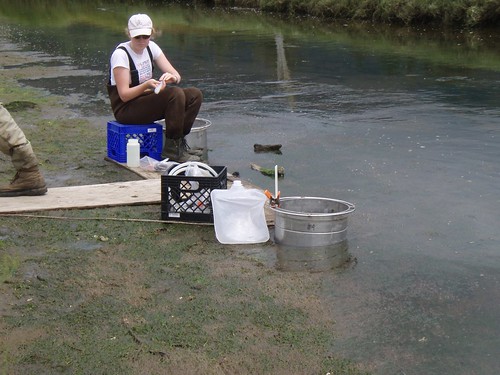The NOAA dock subtidal project is officially complete! On Thursday we finished our last 10 sites in Sally’s Bend in no time at all. We were only out on the water until about 11am! Even with measuring clams, we finished in under 8 hours that day, which was really surprising given all the difficulties we had the last time we were out diving in the Yaquina. Its a wonderful feeling to say that during the time I have been working in Newport an entire field project was completed, even if it was a short project.
The rest of this week was spent cleaning up from our Tillamook work (cleaning out the boats, temporarily stashing our equipment, etc) and catching up with office work. I thought bring in the office would a nice change of pace, but compared to the action-packed fieldwork I normally do, sitting in the office started getting old quickly.
Over the past few weeks, I have been slowly entering historical subtidal data from Tillamook Bay surveys. This has been my “go-to” task during the few times we weren’t out doing fieldwork. There is data from the 1975, 1976, 1977, 1985, and 1986 subtidal studies done in Tillamook Bay. There is data on where the transects/stations were located, how many and what type of clams were found at each station, and for most years, the length and weight measurements for the Bay Clams (Butter, Gaper, Littleneck, Cockle).
This week I basically finished entering the data and I just need to get it all looked over by Tony or Stacy to make sure the formatting is correct. Because we have already done a lot of work in Tillamook, I started noticing some difference between the data we have been collecting and the older data. The biggest difference is the sheer number of clams we are finding. Surprisingly, many of the samples we have collected this summer seem to have a much higher density of clams. However, in the past the highest densities belonged to Butter and Native Littlenecks. Presently we are finding A LOT of Butters, but very few Littlenecks. The clams we are finding seem to be in the same average size range as the ones collected in the past. This, of course, is based on what I noticed and can remember, and I can’t say what is or isn’t significant. That type of in-depth analysis can only happen in the winter once the Tillamook study is completed. And speaking of Tillamook, I have pictures!
This coming week is going to be a new adventure, as we are going to start intertidal dredging in the Yaquina, sometimes called “Megacoring”. All I know is that my first day is Tuesday and I have to wear a drysuit and learn to use a dredge pump that is slightly smaller than the one we used to get the subtidal samples. I am very excited to learn how to do this, but also a little nervous as I have never had to work in a drysuit before, much less use a dredge pump. But that is what this summer is all about, right?










